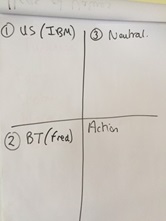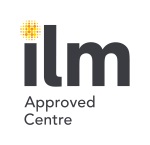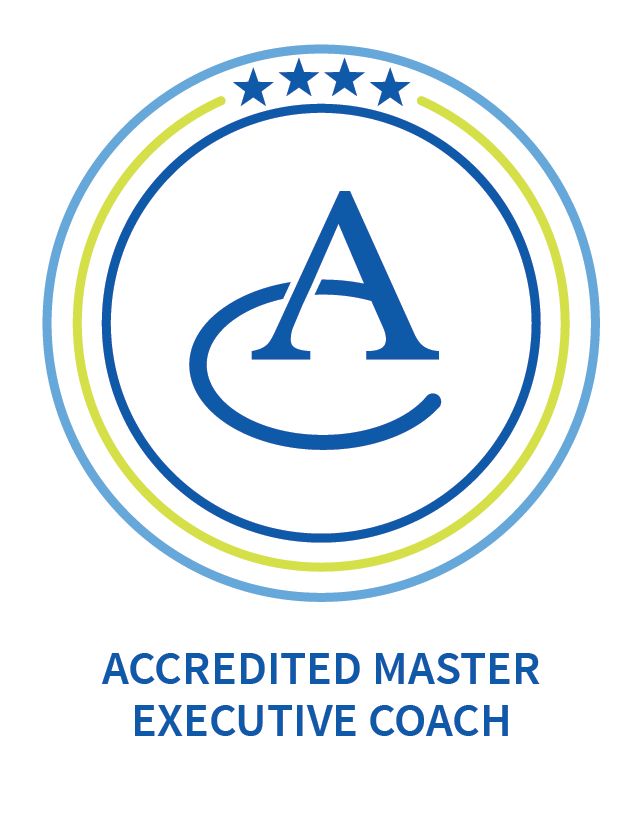Coaching and Coach Training at work: The Ultimate Guide for coaches, managers and leaders
Since the start of millennium, and probably for several years before, coaching has been recognised as an excellent tool to improve performance at work. Coaching skills are invaluable, whether you are a:
- leader
- line manager
- internal coach
- external / professional coach
and whether there is a ‘formal’ coaching arrangement (such as hiring a business coach / executive coach), or you are using it as a management tool (line managers using a coaching style / approach) to improve employee performance.

In this Ultimate Guide, you will be able to learn about;
- coaching,
- coaching skills,
- how to become a great coach (coach training),
- some do’s and don’t’s when coaching
- several models for coaching.
This Ultimate Guide is organised into the following sections, so that you can skip to the parts that are most relevant to you. Please note that we regularly update this guide, so you may want to revisit it from time to time to see what’s new. Also, whilst we recognise that there are different terms to describe the various recipients of coaching (client, client, colleague), in this document we will use the term ‘client’.
Contents
A definition of coaching; Comparisons with mentoring; Comparisons with other forms of ‘help / support’
General benefits of coaching; Some evidence of the benefits of coaching; Some case studies and examples of the benefits of coaching at work
What is the GROW model, and why is it so useful?; How to use The GROW Model
OSCAR; OSKAR; R=P-I; AIR Model
Coaching organisations / bodies; The main types and levels of coaching qualifications; 7 questions to ask yourself before deciding which qualification to choose
The benefits of coach training for you as a professional coach or line manager; The different types of coach training
1. What is coaching?
A definition of coaching
The Association for Coaching defines coaching as:
“A collaborative solution-focused, results-orientated and systematic process in which the coach facilitates the enhancement of work performance, life experience, self-directed learning and personal growth of the client.”
The late Sir John Whitmore, generally considered to be one of the ‘fathers’ of modern-day coaching, gives this definition of coaching:
‘Coaching is unlocking a person’s potential to maximise their own performance. It is helping them to learn rather than teaching them.’
Coaching is based on the belief that the client/client always has the answers to their own problems, and that he/she may need some help (from a coach) to find these answers. Therefore coaching (in the sense generally accepted in the work-place) is about facilitating solutions, not about telling people what to do, or training them, or doing counselling or psychotherapy (see below).
As you might imagine, there are a set of skills required to be able to facilitate enhanced performance, and these skills can be learned.
Comparisons with mentoring
One of the confusions about coaching comes from the area of sports coaching, where the sports coach is the expert and teaches the athlete how to perform their sport better. In the workplace, this sort of advice is more like mentoring, where typically the experienced executive or manager guides the new or less experienced colleague using the benefit of his/her experience. A true coach does not need to know anything about the topic to be able to coach effectively. Having said that, the coach may find it useful to adopt a mentoring style where appropriate.
Comparisons with other forms of ‘help / support’
It is important that coaching is not confused with other forms of personal help such as counselling and psychotherapy. In summary, the latter two types of support are more suited for people with emotional issues, which may relate to past experiences, rather than coaching and mentoring, which relate to the present situation/objectives and the achievement of future goals.
2. Benefits of coaching
General benefits of coaching
There are numerous studies and reports confirming the benefits to organisations and individual employees from coaching. In summary, organisations reported improved:
- Work performance
- Business management
- Time management
- Team effectiveness
and individuals reported improved:
- Self-confidence
- Relationships
- Communication
- Work/life balance
Professional coaches need no convincing of the benefits of being able to coach effectively. Some managers are aware of these benefits, and many have yet to fully embrace coaching as part of their management style.
Some evidence of the benefits of coaching
There are numerous studies about the benefits of coaching. Here are some examples:
Some case studies and examples of the benefits of coaching at work
Ask any competent coach and he/she will be able to provide examples of how their clients have achieved tangible benefits. The same will apply if you ask any manager who adopts a coaching approach. Here are some examples:
- A partner in a top 50 firm of accountants increased sales by £1million after just four coaching sessions.
- A business owner whose annual revenue increased by 25% after 7 coaching sessions
- A business owner having more clarity about the direction of his business than he had for the previous 20 years, after just one session.
- A CEO whose business generated record profits for two consecutive years, and was voted in ‘The Sunday Times’ top 100 companies to work for.
3. Coaching skills and competencies for managers and professional coaches
Given that the coach (whether professional or a line manager) does not need to know about the topic being discussed in order to coach effectively, there are various skills that are essential for effective coaching. Here are some key skills (for an in-depth list of coaching competencies from The Association for Coaching and the International Coaching Federation):
General:
- Abiding by coaching ethics: this includes creating an effective coaching agreement between you and the client, and abiding by relevant coaching ethics and, where relevant, the policies of your organisation if you are a line manager
- Using a relevant coaching model(s) where appropriate: At the very least, have one coaching model. The GROW model is particularly useful for managers coaching in the workplace.
- Having a range of coaching models and tools: Ideally, the coach (whether professional or line manager) will have several methods at their fingertips when coaching.
Specific:
- Building trust and rapport: It is essential to create rapport, whereby the client trusts you as a coach. If the client does not trust or feel comfortable with you, it’s unlikely he/she will be coachable by you.
- Listening: Being able to listen to what is actually being said (and at a more advanced level, what is unsaid), without judging, mis-interpreting and interrupting.
- Asking questions: Being able to ask useful questions (usually ‘open’ as opposed to ‘closed’ questions), to move the client towards what they want to be, do and have.
- Setting goals, and maintaining focus on them: whether it’s to help a direct report with want they want from the meeting or to help a client set a clear goal, it is essential to help set the goal(s) and maintain focus (yours and the client’s) on it.
- Holding clients to account: If clients don’t do what they say they will do, it is essential that you point this out to them, and, if appropriate, explore what stopped them. Where the client repeatedly does not do the tasks they agree to do, you might want to consider whether you wish to continue coaching them.
- Challenging clients: using a sporting analogy, an effective sports coach is not always nice to the athlete; sometimes they push and challenge them to excel and be the best they can be (perhaps better than the client themselves thought they could be). The similar principle applies with coaching at work (whether as a professional coach or line manager). And remember, sports champions always thank their coaches for the belief they have in them and commitment to their excellence.
- ‘Managing’ a coaching session: This helps you to achieve real progress in the time allotted, sticking to topics that help the client achieve their goals and avoiding being side-tracked.
- Raising awareness and creating insight: Generally, the more self-aware a client is, the more resourceful they are and more likely they will achieve their goals and not let their own patterns of thinking / behaving limit them.
- Giving effective feedback: being able to give feedback to improve performance, which may be affirming what the client is doing well and/or giving them areas to improve on. At times, you may need to give in-the-moment feedback about, for example, the impact of the client’s behaviour. You may need to be sensitive when doing this, and ask yourself how objective you are being.
- Staying ‘professional’: this includes keeping your skills up to date (there are numerous options for CPD), abiding by the professional code of ethics, and having regular and sufficient coaching supervision.
ICF defines Coaching Supervision as follows:
“Coaching Supervision is the interaction that occurs when a coach periodically brings his or her coaching work experiences to a coaching supervisor in order to engage in reflective dialogue and collaborative learning for the development and benefit of the coach and his or her clients.”
4. The GROW model: a coaching model for everyone
What is the GROW model, and why is it so useful?
One of the easiest to use, well-respected and best-known coaching models is the GROW model. According to Wikipedia, “there have been many claims to authorship of GROW as a way of achieving goals and solving problems. While no one person can be clearly identified as the originator, Graham Alexander, Alan Fine, and Sir John Whitmore all made significant contributions.”
The GROW model itself is:
- really easy to use,
- relevant for beginner through to expert coaches,
- suitable for coaching people in brief sessions (e.g. 10-15 minutes), as well as longer sessions
- the foundation of many coaching models.
It is also useful as a structure for managing meetings.
The table below explains the model.
| Step | What | Note for Coach |
| G oal | What does the client you want from the specific session/meeting (e.g. a way to prepare for tomorrow’s important supplier meeting) or the coaching relationship (how to hit their annual sales target)? | Ask the client to set the goal. |
| R eality | Where is the client now in relation to that goal? (Client may wish to amend the Goal after this point). | Ask the client. Check client’s assumptions. |
| O ptions | What options do they have to get from where they are to where they want to be? How could they do it? What will they gain/lose by doing it/not doing it?
| Resist the temptation to evaluate options as they are mentioned. Just facilitate the client to give you a list. |
| W hat W hen W ill-power W rap-up W ay forward | What will the client do, given the options? When will they do it? Does the client have the ‘will’ to do it? | Make a note of what will be done and by when. Make steps and actions specific. Ask what support (if any) the client needs. |
How to use The GROW Model
You can use the GROW model to coach as a line manager or as a professional coach, When coaching as a line manager, examples of the coaching ‘relationship’ could be:
- you taking a coaching approach to a one-off situation
- you taking a coaching approach to situations generally
- you having planned, regular and on-going coaching sessions with one or more of your team.
As a professional coach, you could use the GROW model as a structure to cover several topics in a coaching session.
In either situation, once you know the topic that your team member / client wants to discuss, and have set aside sufficient time to discuss it, you could use the GROW model as follows (click here for a selection of GROW model questions):
- Goal: Ask him/her what they he/she wants from the meeting / session. An example of a one-off goal could be, ‘how to prepare for tomorrow’s important supplier meeting’. An example of a longer-term goal could be, ‘how to hit their annual sales target’
- Reality: Ask where he/she now in relation to the goal (e.g. three months into the new financial year the client has achieved 20% of their annual sales target), or find out a little about the current situation (e.g. the supplier is unhappy with the terms recently negotiated and has called a meeting). N.B. Please only ask questions that are likely to give you useful information (i.e. information that will help you coach the client to get what they want from the session) rather than interestinginformation (which you can discuss outside work). It is possible that your client may need to re-asses their goal in light of the current situation / reality.
- Options: Ask the client to list the options they have to move from where they are to where they want to be. N.B. when coaching, please avoid the temptation to suggest options until the client has run out of ideas. Please also resist the temptation you or the client may have to evaluate the options at this point. Simply help them to get their ideas flowing.
- What: Once the client has listed the options, you can facilitate them to evaluate the options and decide on what action(s) to take, with deadlines and a discussion about how they will achieve the actions, and the .
As the coach, it is usually helpful to keep a list of agreed actions and deadlines, and encourage the client to keep their own notes of this. You can use these notes as the basis for the next session / meeting.
5. Other coaching models
There are numerous other coaching models. Here are some of them.
OSCAR
The OSCAR Coaching Model was developed by Andrew Gilbert and Karen Whittleworth. The model builds upon the GROW model and is particularly useful for managers seeking to adopt a coaching style.
- Outcome: Similar to the ‘Goal’ in GROW
- Situation: Similar to the ‘Reality’ in GROW
- Choices and Consequences: help your client generate as many choices as possible and highlight consequences of each potential choice (Similar to the ‘Options’ in GROW)
- Action: Similar to the ‘What’ in GROW
- Review: Reviewing progress, challenges etc would typically take pl\ace at the start of the next session / meeting.
OSKAR
The OSKAR model was developed by Paul Z Jackson and Mark McKergow who describe the model in their book ‘The Solutions Focus, Making Coaching and Change SIMPLE’. As with OSCAR, it is similar to the GROW model.
- Outcome: Similar to the ‘Goal’ in GROW
- Scaling: Scaling is an extremely useful coaching tool, which uses a scale from 1-10. In this situation, scaling is used to establish and quantify how near / far the client is from where their desired outcome.
- Know-how; Help the client explore what they need to achieve their desired outcome (and progress up the scale), exploring the key skills, knowledge, attributes and perhaps qualifications they need.
- Affirm + Action; Establish / acknowledge what is currently working well, and explore actions needed to improve the score (similar to the ‘Outcome’ and ‘What’ in GROW).
- Review: Review progress (not just the actions taken), decide what has improved and what the client needs to do next to continue the improvement.
R=P-I
In his best-selling book ‘The Inner Game of Tennis’, Timothy Gallwey explains how:
Results / Performance (R) = Potential (P) minus Interference (I).
Using this model, the coach’s role is simple (not necessarily easy!): Increase the client’s potential and / or reduce / remove anything that prevents the client being at their best. Examples of ways to increase potential are:
- Identifying ways to fill gaps in knowledge / skills
- Identifying what the client already does well (they may be unaware of this) and discussing how they could do even more of it, or do it more often.
Examples of ‘interference’ are:
- Limiting / disempowering beliefs
- Lack of confidence
- Problems outside of the immediate situation (e.g. worries / concerns about health, family or finances)
Subject to the scope of the coaching, and the competency of the coach, these ‘interferences’ can be addressed by some of the other coaching models referred to here, and by Neuro-Linguistic Programming techniques. It is important to emphasize that coaches must not exceed their leel of competence; for example, if the client needs professional counselling, refer them to someone who is suitably qualified.
AIR Model
Developed in 2006 by Jeremy Lazarus as a result of some marketing coaching from Gabriella Goddard, this model recognises that, at a more advanced level, part of the coach’s role is to expand the thinking of their client.
A = Awareness. I = Informed choices. R = Results
A part of the coach’s role is to raise the client’s awareness so that they can make truly informed choices and get the results they want. For example, let’s say that a client doesn’t like making cold calls as part of their role, and believes that it would take a huge amount of personal development training and effort to be able to do so. Letting the client know that there is a 10-minute NLP technique that could resolve this (awareness) allows the client to make a more informed choice about what to do, and hence make it more likely that they will achieve the results they want.
Another aspect of raising awareness is being willing / able to, metaphorically, hold the mirror up to the client, so that they become more self-aware.
6. Benefits of coaching
There are three main types of organisations which grant coaching qualifications;
- coaching organisations / bodies
- management / business educational bodies
- universities (usually post-graduate level)
Coaching organisations / bodies
There are several coaching bodies, some of which are solely for coaching, and others are more general management bodies which offer coaching qualifications. Here is a list of some of the main ones:
- Association for Professional Executive Coaching and Supervision apecs.org
- Association for Coaching. associationforcoaching.com
- Chartered Institute for Personnel & Development*. cipd.co.uk
- Chartered Management Institute*. managers.org.uk
- European Mentoring and Coaching Council. http://www.emccouncil.org/
- Institute of Coaching. instituteofcoaching.org
- Institute of Leadership & Management*. i-l-m.com
- International Coaching Federation (ICF). coachfederation.org

- The importance of the group understanding the process and buying into it. The facilitator could link the process to the group’s goals, and use stories of where he/she previously used this process successfully.
- The importance of ‘breaking state’, in other words really putting on the ‘hat’ of position 1, 2 and 3. This could be assisted by personifying both someone at the client (position 2) and the wise observer (position 3).
A variation of the process could be using The ‘Disney’ pattern with a group (dreamer, realist, critic and production room).
The third topic was the linguistic indicators of Towards and Away From. The group briefly discussed these indicators:
Towards: words/ideas such as goals, targets, ideas stated in ‘positive’ terms, achieve, get/obtain.
Away from: words/ideas such as negations, ideas stated in ‘negative’ terms (don’t want to …), Modal Operators of Necessity (must, ought, should, have to,).
The final topic was how to use Neuro-Logical Levels to become even better at a specific area, for example, leadership, management, coaching, being an athlete. Each pair marked the ‘levels’ in a line on the floor (Environment, Behaviours, Capabilities, Beliefs/Values, Identity and Mission/Purpose), and considered their specific area from each of the six perspectives. A couple of groups finished early, and decided to re-visit the exercise, but with the six levels arranged in a circle rather than a line. They found that going through the exercise a second time with the levels in a ‘continuum’ rather than a line enabled them to gain even greater insights. This was a useful learning for me and the group.
The final 20 minutes involved two coaching circles; one with a delegate who wanted some input into how to coach a client who had concerns about doing presentations, and the other with a delegate who wanted some insights about how to motivate a particular member of staff. Both groups found the brief session useful, gaining insights from the different perspectives brought by the other members of the circle.
The next NLP Practice Group is Saturday 30 January 2016, 9.30 to 1.30, at the Danubius Hotel, St John’s Wood, London NW8 7JT.

*denotes UK business / management bodies offering coaching qualifications that are widely-accepted in the work-place.

The main types and levels of coaching qualifications
Many of the coaching bodies have different levels of membership / accreditation, denoting the level of experience and, hopefully, skill of the coach. For example:
- Foundation / associate level
- Coach level
- Professional Coach level
- Master coach level
Each coaching body will have its own set of criteria for each level, and in most cases require the applicant to have attended training course(s) appropriate for that level.
In the UK, the management / business bodies (e.g. CIPC, CMI, ILM) offer coaching qualifications that equate to ‘A’ level (known as ‘Level 3’ in the UK), Bachelors degree level (‘Level 5’ in the UK) and Master’s degree level (‘Level 7’). Generally, these qualifications are well-respected and accepted in the workplace, and are suitable for both managers seeking a coaching qualification and professional coaches seeking to do business coaching / executive coaching in organisations.
There are numerous universities offering Masters’ Degrees in coaching.
7 questions to ask yourself before deciding which qualification to choose
There are several questions for you to consider when choosing which qualification route to take, or indeed whether to seek a qualification / accreditation at all.
‘Do I need a qualification at all?’
- What do you want to achieve from / do with the coaching knowledge?
- How much coaching will you be doing? If it’s a relatively small amount, then would a workshop or non-certificated course be sufficient?
- Will the coaching skills help you to progress, either as a line manager or as a professional coach? Would the qualification help you to progress even further / faster?
- As a professional coach, would your clients expect you to be highly qualified? (Clue: if HR / L&D departments are involved in any way, the answer is almost certainly ‘YES’)
- Do you have the time for the self-study required to gain a meaningful qualification?
Assuming you decide that it is worthwhile gaining a qualification, here are some questions to ask yourself (questions to ask the training company are covered later).
6. Do I want to join become accredited by one of the professional coaching bodies, or to take the ILM/CMI/CIPD route, or both? It is feasible to complete, for example, an ILM Level 7 Certificate for Executive and Senior Level Coaches and Mentors and use this as part of your application for a professional coaching body. Please note that some of the professional coaching bodies insist on your doing one of the courses they have prescribed, other bodies are more flexible.
7. How many hours of coaching have I done / do I expect to do? For example, The ILM require 20 hours of senior-level coaching for the ILM Level 7 Certificate for Executive and Senior Level Coaches and Mentors, and typically you would need to do around 50-100 hours for the foundation/lower level for the professional coaching bodies. If you are a line manager and feel it would be difficult to do 50-100 hours coaching in order to gain a qualification, you may find it easier to do the ILM/CMI route and then apply to one of the professional bodies in due course.
7. Coach training
The benefits of coach training for you as a professional coach or line manager
Regardless of whether you are a novice or expert, a line manager or a professional coach, a good training course will have numerous benefits for you. The table below summarises this:
| Potential benefit | Line manager as coach | Professional coach |
| Enhance your existing coaching skills | Yes | Yes |
| Learn new coaching skills | Yes | Yes |
| Become more confident as a coach because of your enhanced and/or new skills | Yes | Yes |
| Become a better line manager, and hence -gain better results from your team -gain more job security | Yes | n/a |
| Become more credible with colleagues | Yes | n/a |
| Become more credible with clients | n/a | Yes |
The different types of coach training
There are, as you might expect, numerous types of coach training. For line managers and professional coaches wanting coach training for the workplace (as opposed to life coaching, or other specialisms such as ‘health’, ‘wealth’, ‘relationship’, ‘confidence’ coaching) there are the following main types of trainings:
- Introductory courses (usually 1-2 days)
- Intermediate (possibly 3-4 days)
- Advanced (at least 5 days). There may be short workshops for experienced coaches on a particular topic.
Each of these courses may be further categorised:
- accredited by established and well-known coaching organisations
- ‘accredited’ by lesser known coaching organisations
- non-accredited,
- eligible for Continuing Professional Development purposes
Accredited courses can be at different levels based on the different accreditation levels available (e.g. Level 3, Level 5, Level 7).
If you would like to understand this further, feel free to contact us, or speak to some of the main coaching organisations listed in this document.






